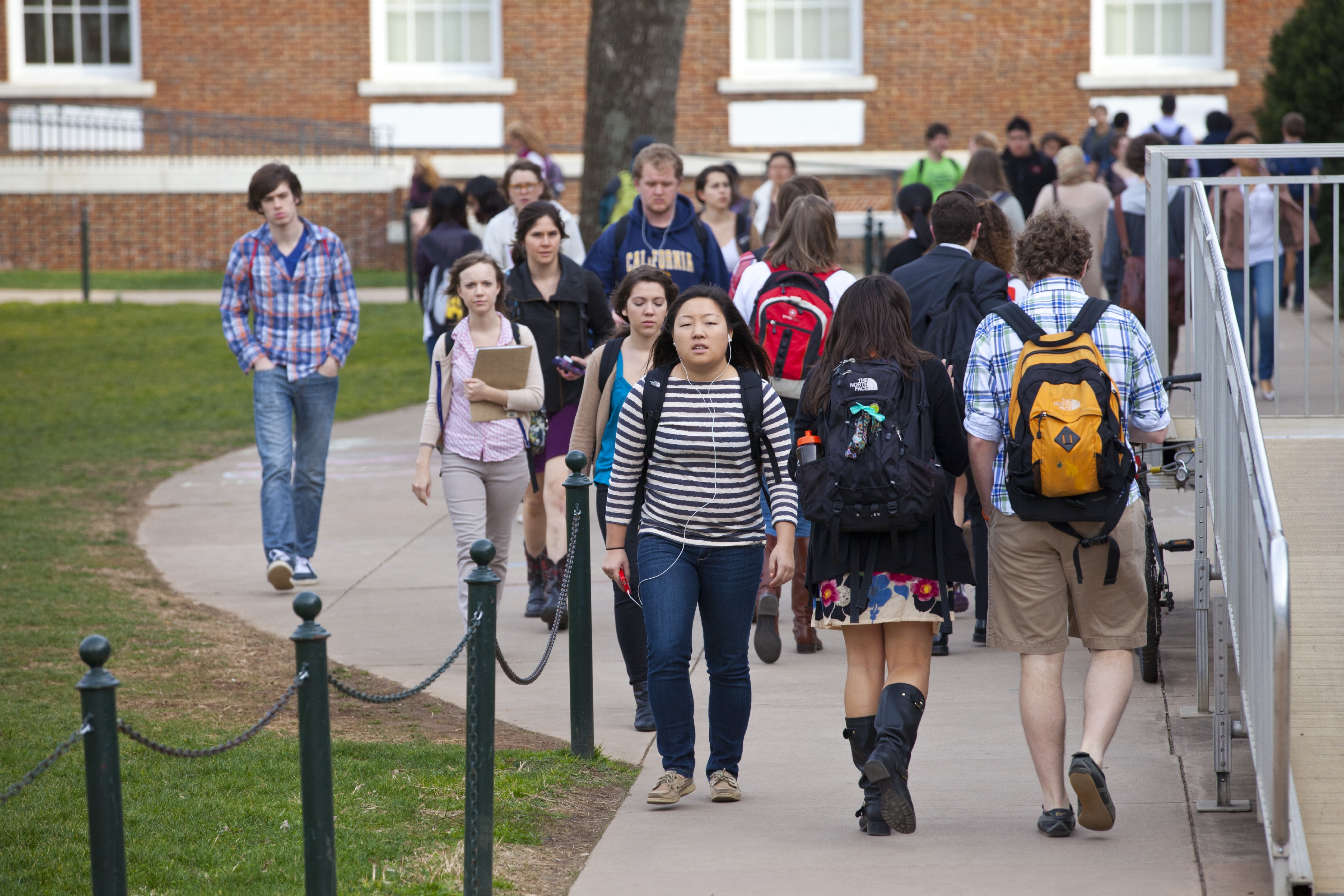There’s early action, and then there’s really early action.
The University of Virginia posted its first round of admission decisions online at 5 p.m. on Jan. 11, nearly three weeks ahead of its announced schedule.
Five minutes later, the first admitted applicant reserved a spot in the Class of 2017.
Under U.Va.’s “early action” admission program, now in its second year, applicants who apply by Nov. 1 are promised a decision by Jan. 31. Those who are offered admission are then allowed to mull their options (and compare offers from other schools) until the May 1 deadline to reserve their places in the first-year class that will arrive this fall.
Some folks apparently don’t need that long. As of Wednesday, 158 of the 3,848 students who were offered admission had already placed deposits.
This year’s early action process drew 13,668 applicants, up 17 percent from last year, the first the program was offered.
“The volume continues to be high, and the quality of the applicants is very, very good,” Gregory W. Roberts, dean of admission, said.
Of those not offered admission this month, 3,532 were deferred to the “regular” admission cycle, which officially began with the Jan. 1 application deadline.
Those who were deferred need not lose hope, Roberts said. Last year, nearly 800 deferred students were eventually admitted in the regular decision process, he said, adding that the most common reason for deferral is a desire to see students’ first-semester, senior-year grades.
The competition in this year’s early action process was fierce, Roberts said. Those offered admission posted an average SAT score of 1,421 (on a 1,600-point scale), up from 1,413 last year. Of those students who received offers, 98.3 percent ranked in the top 10 percent of their high school graduating classes, up slightly from 97.7 percent a year ago.
Grades and standardized test scores aren’t the only things that get evaluated, Roberts said; admissions officers are looking for well-rounded students who bring something else to the table. Among those who received offers were a world-class ballerina and a four-time national geography bee champion.
“We’re looking at personal qualities and characteristics,” Roberts said. “We’re seeking interesting students who love to learn.”
Until 2007, U.Va. had offered a binding early decision program, under which applicants committed to attend the University if they were admitted early. The program was discontinued amid indications that requiring students to commit before being able to evaluate their financial aid offers led to an application pool that was unduly skewed toward the upper end of the economic spectrum.
By contrast, those admitted under the early action can apply to any school they would like, and to compare financial aid offers before making their choice.
“We’re attracting a strong and diverse group of students – far more diverse than early decision was,” Roberts said.
Almost a third of the early applicants (4,442) identified themselves as minorities or international students, up from 29 percent a year ago.
Virginians made up about 29 percent of the early action pool, and received 44 percent of the total offers. Virginians typically accept admissions offers at a higher rate than out-of-state students, Roberts said. The University continues to maintain its in-state enrollment at about 70 percent, he added.
The Office of Admission has now shifted its focus to the regular admission cycle. By the time it posts the next round of decisions in late March, admission officers will have evaluated a record 29,250 applications.
Their target enrollment is 3,465, or 105 more students than last year’s goal – part of the state’s push to increase the number of degrees awarded statewide, with an emphasis on degrees in science, technology, engineering and mathematics.
An effort to boost interest in U.Va.’s School of Engineering and Applied Science appears to be paying off, Roberts said, perhaps aided by its reputation for offering strong post-graduate employment prospects in an uncertain economy. The Engineering School saw the University’s largest increase in early action applications, up 38.5 percent from a year ago.
Media Contact
Article Information
January 23, 2013
/content/early-action-first-deposits-rolling-uva-s-class-2017

